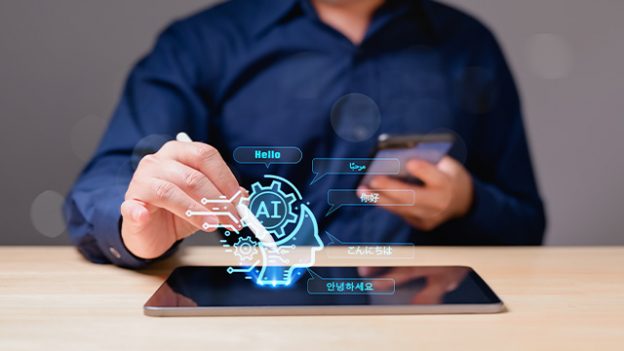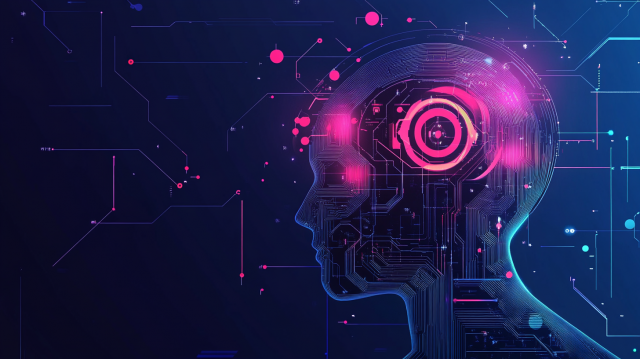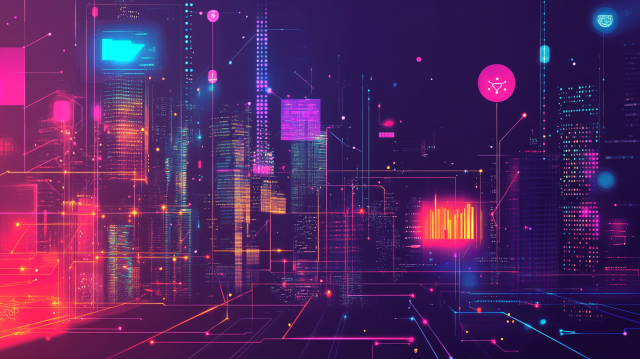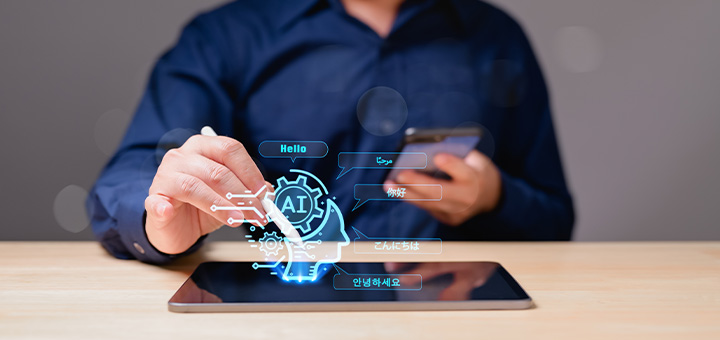
- Table of Contents
-
- 1. AI Translation (Machine Translation)
- 1-1. What is AI Translation (Machine Translation)?
- 1-2. AI Translation (Machine Translation) Mechanisms
- 2. Benefits of AI Translation (Machine Translation)
- 2-1. Achieving overwhelming speed while maintaining high quality
- 2-2. "Learning Ability" That Improves Accuracy
- 2-3. Quickly translate large volumes of documents
- 2-4. Contributing to Significant Cost Reduction
- 2-5. Easy support for multiple languages other than English
- 2-6. Achieving Real-Time Performance by Combining with Voice Input
- 3. Disadvantages of AI Translation (Machine Translation)
- 3-1. Inaccuracy
- 3-2. Inexpressiveness
- 3-3. Lack of Cultural Background
- 3-4. Need for Human Verification
- 3-5. Security Risk Concerns
- 4. How to Overcome the Faults of AI Translation (Machine Translation)
- 4-1. Using the Most Accurate Translation Engine
- 4-2. Outsourcing to a Translation Company with a Professional Review System
- 4-3. Using Translation Tools and Companies with High Security
- 5. Summary
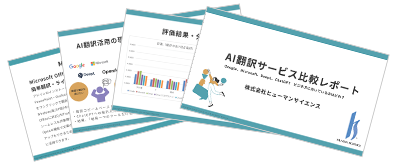
1. AI Translation (Machine Translation)
1-1. What is AI Translation (Machine Translation)?
AI translation (machine translation) refers to the technology that utilizes artificial intelligence to translate between languages. This type of AI primarily utilizes advanced technologies known as "neural networks" and "deep learning." Neural networks mimic the structure of neural circuits in the human brain, enabling more effective processing of vocabulary and grammar. Deep learning, for its part, is a learning method that has evolved those channels into a multi-layered structure, enabling the recognition of more complex patterns and producing more natural translation results. Thanks to these breakthroughs, AI translation is achieving increasingly accurate translation results.
1-2. AI Translation (Machine Translation) Mechanisms
AI translation operates through various mechanisms. First is the rule-based approach, where translation rules for grammar and terminology are set by humans, and translations are performed based on these rules. In contrast, the statistical approach involves analyzing a large amount of bidirectional translation data to statistically predict the most appropriate translation. But recently, the neural network approach has seen rapid growth. This mechanism uses machine learning algorithms to learn diverse language patterns from vast amounts of data, and the result has been more natural and high-quality translations. By utilizing these technologies, AI translation is exponentially improving its accuracy and becoming an important tool for everyday communication.
2. Benefits of AI Translation (Machine Translation)
With the advancement of AI technology, AI translation (machine translation) is becoming an indispensable tool in business settings. It has overcome the challenges that traditional machine translation faced and is now being adopted by many companies. Here, we specifically explain the six main benefits that AI translation brings.
2-1. Achieving overwhelming speed while maintaining high quality
Traditional human translation, while ensuring quality, has faced significant challenges in terms of time and effort. On the other hand, earlier machine translation was fast but often produced unnatural translations, making it insufficient for business use in many cases. Current AI translation, especially Neural Machine Translation (NMT), bridges the gap between these two. By understanding context, it enables translations that are significantly more natural and accurate compared to traditional machine translation. This allows for a high-level balance of the two important factors: "quality" and "speed."
2-2. "Learning Ability" That Improves Accuracy
One of the major features of AI translation tools is their ability to learn from usage data and continuously improve translation accuracy. By registering company-specific technical terms, product names, and particular expressions, it is possible to develop a translation engine optimized for your company. This enables a level of high accuracy and consistency that was difficult to achieve with conventional general-purpose translation tools.
2-3. Quickly Translate Large Volumes of Documents
When conducting business globally, it is necessary to translate a vast amount of documents such as technical specifications, contracts, manuals, and website content. Translating these manually requires weeks to months and incurs significant costs. By utilizing AI translation, even volumes of data that are unmanageable for humans can be processed in just a few minutes. This enables rapid overseas product expansion and multilingual information dissemination, ensuring you do not miss business opportunities.
2-4. Contributing to Significant Cost Reduction
When outsourcing translation to an external translation company, costs are incurred based on the number of characters or words. Especially in highly specialized fields or large-volume translations, costs tend to become a significant burden. By introducing AI translation, labor costs and outsourcing expenses related to translation can be greatly reduced. Additionally, shortening the time required for translation also reduces the workload of related tasks, resulting in immeasurable overall cost benefits. This can be particularly economically beneficial for companies that regularly handle large volumes of translation.
2-5. Easy support for multiple languages other than English
The globalization of business is not limited to English-speaking countries. However, with human translation, it was necessary to find specialized translators for each language pair (e.g., Japanese⇔Thai), which involved time and cost. Many AI translation services support dozens to over a hundred languages on a single platform. This makes it easier to enter language markets that were previously difficult to approach, enabling low-cost and speedy marketing and support for customers worldwide.
2-6. Achieving Real-Time Capability by Combining with Voice Input
AI translation demonstrates its true value not only with text but also when combined with voice. By integrating speech recognition technology with AI translation, real-time communication becomes possible. For example, it can be used like simultaneous interpretation during online meetings with overseas offices or as an interpretation device when dealing with visitors from abroad, among many other applications. Overcoming language barriers in real time enables smoother and more dynamic international communication.
3. Disadvantages of AI Translation (Machine Translation)
There are several disadvantages to AI translation (machine translation). The more significant points are explained below.
3-1. Inaccuracy
AI translations can lack accuracy, especially in sentences that contain complex grammar structures or special jargon. Misinterpretations can occur when the context is misunderstood or when the ambiguity of words cannot be addressed. Additionally, when long sentences or paragraphs are translated, portions of the source text may be missing from the translated text.
3-2. Inexpressiveness
AI translations can come across as overly literal or otherwise unnatural. This is because simply replacing the meaning of the original text with the words of another language does not always capture the context and nuance implied by the source. For example, automatic translations from English to Japanese may yield results that are grammatically correct, but direct translations cannot account for Japan's preferred speech structures and formalities. And so, the results feel unnatural.
3-3. Lack of Cultural Background
AI translation can have some trouble fully understanding and translating text with heavy cultural background and nuance. For example, translating idioms, proverbs, humor, and sarcasm can be difficult and often results in unnatural translations. In such cases, a human translator is needed to appropriately rephrase the automated results.
3-4. Need for Human Verification
Because the results of AI translation are not always perfect, human verification is necessary. For important documents and official communications in particular, asking a professional translator to check the results is absolutely essential.
3-5. Security Risk Concerns
When using AI translation services, you must consider the data security risks. This is especially true when translating documents that contain confidential information. Some AI translation services use the input data to train a common AI model that is shared by all users, creating a risk of that data being displayed to third parties. Therefore, careful information handling is required. For more details on the security of DeepL, one of the leading AI translation services, check the blog post below.
Confidentiality with DeepL Translations. Is It Secure?
4. How to Overcome the Faults of AI Translation (Machine Translation)
4-1. Using the Most Accurate Translation Engine
It is important to use a translation engine with the highest accuracy possible. By this point, various AI translation services are available, each using a different translation engine, and the accuracy and quality of translations will vary by service. For example, one translation engine may excel in translating technical documents in the IT field, while another engine prevails in medical translations. There are even engines that specialize in translating patent documents.
Choosing the right engine to fit the purpose of the document makes a big impact. You should probably use a different translation engine for technical documents, which requires accuracy, than for marketing blurbs, which must be expressive and evocative.
AI translation services enable you to use multiple translation engines selectively or simultaneously. By translating the same text with multiple translation engines and comparing the results, you can adopt the most appropriate translation. Additionally, comparing the differences highlights any mistranslations or omissions, helping you improve the overall accuracy of the translation.
4-2. Outsourcing to a Translation Company with a Professional Review System
Hiring a translation company with a professional review system is recommended to ensure the quality of your translations. Successful translation requires more than just the replacement of words into other languages; it should be done with a deep understanding of culture and context. Therefore, the involvement of professional human translators is essential. Professional translators are familiar with the nuances of the language and special terms, so they can provide accurate and natural translations.
Furthermore, in translation companies with a professional review system, a second language expert will review the translation after the translator has completed their work. This process ensures that no mistranslations or unnatural expressions remain, guaranteeing the final quality.
4-3. Using Translation Tools and Companies with High Security
Translation tools and companies with high security implement various security measures, such as data encryption, access control, and log management, to maintain the confidentiality of information and prevent data from leaking to third parties during translation. Additionally, by choosing companies or tools that have security certifications, you can rest assured that the services you utilize are reliable. For example, companies that comply with international security standards such as ISO 27001 must meet strict criteria for information security management, proving their safety.
5. Summary
AI translation is a technology that utilizes advanced techniques such as neural networks and deep learning to translate languages. Its greatest strength lies in providing high-quality translations at speeds previously unimaginable. On the other hand, challenges include understanding complex contexts, accuracy of technical terminology, reflecting cultural backgrounds, as well as security risks like information leaks. However, these drawbacks can be mitigated by selecting highly accurate translation engines, having professional translators perform checks (post-editing), and using tools with high security levels. There is no doubt that the business use of AI translation will continue to accelerate across all industries in the future. Wisely incorporating AI translation according to your company's goals and challenges, and maximizing its benefits, will be the key to winning in the upcoming global competition.
At Human Science, we offer the automatic translation software MTrans for Office, which can utilize translation engines from DeepL, Google, Microsoft, and OpenAI. The latter can not only be used as a translation engine, but it can also summarize, rewrite, and proofread text, depending on the prompts. Try out MTrans for Office with our 14-day free trial offer. Please contact us for more information.

Features of MTrans for Office
① Unlimited number of file translations and glossary integration for a fixed fee
② One-click translation from Office products!
③ Secure API connection
・For customers who want further security enhancement, we also offer SSO, IP restrictions, and so on.
④ Japanese language support by a Japanese company
・Response to security check sheets
・Payment by bank transfer available
MTrans for Office is an easy-to-use translation software for Office.

